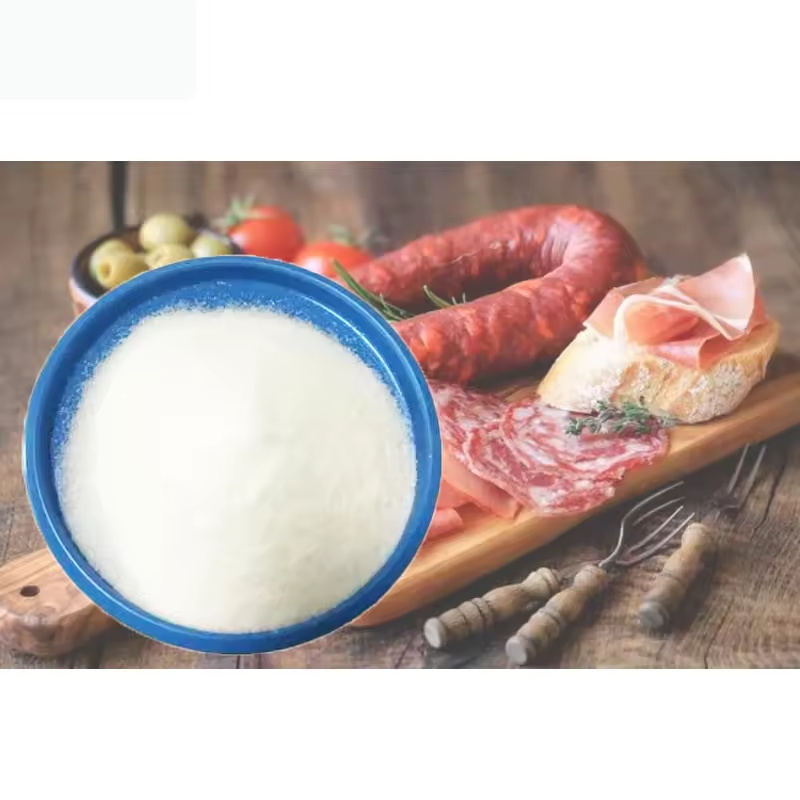-
Make a Call : +86 551 63500087
-
Get A Estimate : sales@gnfchem.com
QU'EST-CE QUE TU CHERCHES?
QU'EST-CE QUE TU CHERCHES?
Make a Call : +86 551 63500087
Get A Estimate : sales@gnfchem.com

Mécanisme d'action et principe anticorrosion des conservateurs
Jul 02, 2025Mécanisme d'action et principe conservateur
conservateurs Les conservateurs sont une classe d'additifs capables d'inhiber l'activité microbienne et de prévenir la détérioration de produits tels que les aliments ou les cosmétiques. Ils jouent un rôle crucial dans la sécurité alimentaire et la prolongation de la durée de conservation des produits. Voici leurs principaux mécanismes d'action et principes :
1. Interférence avec le système enzymatique des micro-organismes
Les conservateurs peuvent inhiber l'activité enzymatique en interférant avec le système enzymatique des micro-organismes et en perturbant leurs processus métaboliques normaux. Ce mode d'action empêche les micro-organismes de se développer et de se reproduire normalement.
2. Coagulation et dénaturation des protéines microbiennes
Certains conservateurs peuvent coaguler ou dénaturer les microbes. protéines, interférant ainsi avec leur survie et leur reproduction. Ce mécanisme affecte la vie microbienne en altérant la structure des protéines, leur faisant perdre leur fonction originelle.
3. Modification de la perméabilité de la membrane plasmique
Les conservateurs peuvent également altérer la perméabilité de la membrane plasmique des micro-organismes, inhibant l'élimination des enzymes et des métabolites de leur organisme et entraînant l'inactivation cellulaire. En affectant l'intégrité de la membrane cellulaire, ce mode d'action empêche l'entrée des nutriments et l'élimination des déchets, entraînant ainsi la mort du micro-organisme.
4. Affecter le matériel génétique ou la structure des particules génétiques
Certains conservateurs agissent sur le matériel génétique ou la structure des particules génétiques des micro-organismes, perturbant ainsi des processus tels que la réplication du matériel génétique, la transcription et la traduction des protéines. Ce mécanisme empêche les micro-organismes de se reproduire et de se développer en interférant avec leur expression génétique.
5. Influence des facteurs environnementaux
L'action des conservateurs est également influencée par des facteurs environnementaux, tels que la température, le pH, la pression osmotique, le rayonnement, la pression hydrostatique, la source d'eau, les nutriments, l'oxygène, les facteurs de croissance organique, etc. Ces facteurs peuvent affecter l'effet des conservateurs, par exemple, dans des conditions acides, certains conservateurs ont une forte capacité inhibitrice contre les moisissures, les levures et les bactéries.
Pour résumer
Les conservateurs inhibent la croissance et la multiplication des micro-organismes par divers mécanismes, prolongeant ainsi la durée de conservation des produits tels que les aliments ou les cosmétiques. La compréhension de ces mécanismes d'action et des principes de conservation permet de sélectionner les conservateurs appropriés pour garantir la sécurité et l'efficacité des produits. En pratique, les conservateurs appropriés doivent être sélectionnés en fonction de l'environnement d'utilisation spécifique et des micro-organismes ciblés, et utilisés dans le strict respect des normes en vigueur afin d'éviter tout effet néfaste sur la santé humaine.

Hi! Click one of our members below to chat on